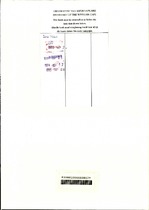| dc.contributor.advisor | Van Heerden, Monica | |
| dc.contributor.author | Abrahams, Patricia Annette | |
| dc.date.accessioned | 2021-08-18T10:11:10Z | |
| dc.date.available | 2021-08-18T10:11:10Z | |
| dc.date.issued | 1992 | |
| dc.identifier.uri | http://hdl.handle.net/11394/8349 | |
| dc.description | Magister Educationis - MEd | en_US |
| dc.description.abstract | This mini-thesis comprises two sections, the what and the how of writing-across-the curriculum (WAC). Section one investigates the integration of writing into content area subjects through the writing process as a project of possibility for critical pedagogy. The view is held that the writing in content area subjects makes learning more meaningful, enjoyable and also empowers students to become critical self-determined thinkers. Students no longer only fill in blanks, choose the correct answer or rely on rote learning when writing in content
area subjects, but write creatively and expressively in a variety of discourse forms. In chapter two the literature on WAC is reviewed in depth.
The chapter commences with some thoughts on what writing is. Then it investigates the writing process and proceeds to what writing across the curriculum is, with all its merits highlighted. The implementation of writing across the curriculum which involves the whole school as well as a proposed writing across the curriculum policy comprises the main section of the chapter. One of the objectives of this research is to show that implementing the writing process in a content area subject not only improves the standard of writing but also enhances the internalisation of subject matter. A further objective is to illustrate that writing across the curriculum can facilitate change in the classroom. Section two, starting with chapter three, is devoted to the "how" of WAC, and its practical application. Observations in classrooms where writing in content area subjects were done in Missouri schools are described and examples of work done at the schools are cited. In chapter four attention is given to the design and presentation of a writing project in Home Economics based on the standard eight Home Economics syllabus. This classroom research is based on experiential learning. A detailed description of the results is included. The last chapter starts with a dream, an outline of a Home Economics project of possibility for a standard eight Home Economics class. The project is developed around community work to convince students that they can make a difference in the world by showing care and concern for the elderly. The second part of chapter five, deals with constraints with regard to the implementation of a writing programme in Home Economics at the school where I teach. The chapter concludes with recommendations for the implementation of a writing programme in Home Economics. | en_US |
| dc.language.iso | en | en_US |
| dc.publisher | University of the Western Cape | en_US |
| dc.subject | Writing-Across-the Curriculum (WAC). | en_US |
| dc.subject | Missouri | en_US |
| dc.subject | Observations | en_US |
| dc.subject | Home Economics | en_US |
| dc.subject | Implementation | en_US |
| dc.subject | Critical pedagogy | en_US |
| dc.title | Writing for learning in Home Economics | en_US |
| dc.rights.holder | University of the Western Cape | en_US |

